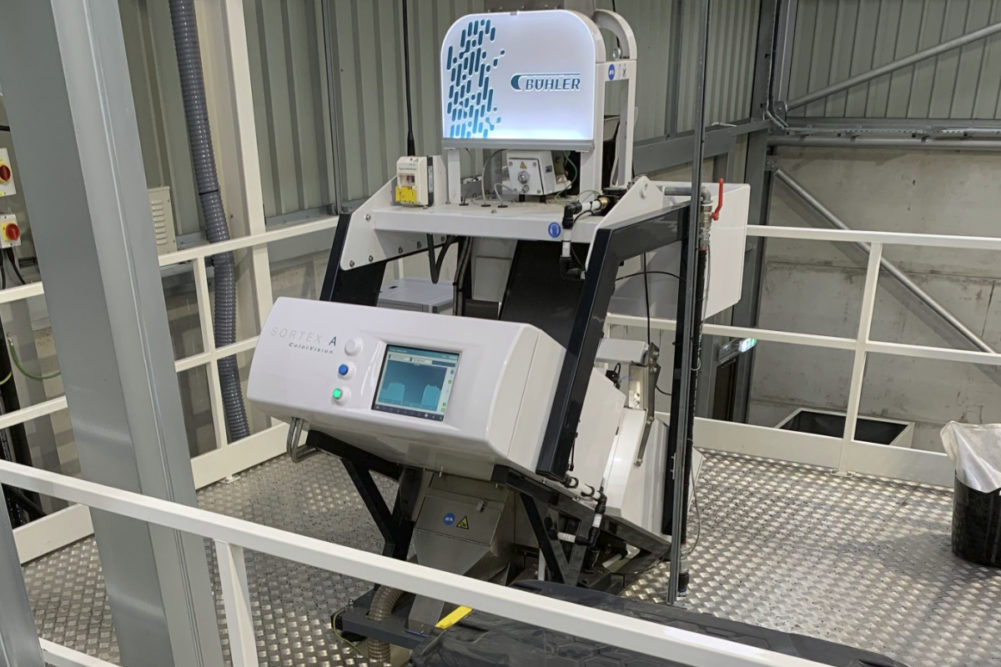LONDON, ENGLAND — Fairking Ltd. invested in an optical sorter to process its varying products that include seeds, chia, borage, quinoa, echium and camelina and batch sizes quickly and efficiently.
The company has been able to recover over half of its waste product while successfully handling different varieties of the smallest seed since investing in a SORTEX A from Bühler.
With more and more active ingredients being blacklisted by the EU and UK, seed discoloration has become an increasing problem for growers. Fortunately, with the SORTEX A’s ColorVision technology, Fairking is able to ensure consistently high-quality products for its customers.
Carrying on a tradition stretching back to the 1850s, the Fairs family farms more than 4,000 acres of land in Great Tey, near Colchester in Essex, UK.
“We grow wheat, oilseed rape, peas and specialist crops such as borage, camelina, quinoa and echium,” said Peter Fairs, who began working for the family business in 1964.
Fairs is a pioneer with “a passion for experimenting with and developing unusual, niche crops.” In 1985, when few British people had heard of quinoa, a friend brought some seeds back from Peru and Fairs tried growing them. It took years of hard work to end up with the quinoa that his business now produces. The Fairs are also the UK’s first chia seed grower.
Fairking remains an independent, family-owned and managed farming business, while cleaning specialist crops for itself and some 60 UK growers.
“We’re fairly unique, because we clean low quantities of seeds and special applications for a number of small companies who sell agri seeds via farm shops or online, but often don’t have the resources to clean the seeds themselves,” Peter Fairs said. “Many growers struggle to find anyone who will clean small amounts of seeds for them. Most won’t set up a processing line for 20 tonnes, they want to run 200 tonnes before changing products, because of money lost through downtime and cleaning time. We’re different.”
Fairking’s line features Bühler’s SORTEX A ColorVision optical sorter with high-resolution InGaAs cameras.
“The sorter makes it easy for us to change products, so we can process and re-process at various batch sizes, small to large,” said Andrew Fairs, who joined the company in 1994.
He added that most of Fairking’s contract processing is repeat business.
“With the quality and flexibility the SORTEX A gives us, we’re able to take on more varied work which helps to grow our business,” he said. “For example, with the SORTEX A we have the ability to clean special flower seeds in very small quantities such as half a tonne at a time.”
Peter Fairs said seed processors face an ever-growing number of challenges.
“The modern thinking is that everything we eat must have no residues or pesticides on it,” he said. “More and more active ingredients are being banned by the EU and UK, and these were used to control weeds and diseases. To an extent, I understand, of course. But without active ingredients, we’re getting more seed discoloration from diseases and far more weed seeds.”
Brands and consumers are becoming more discerning, too, he said.
“I'm looking at a bag of uncleaned camelina seeds; the good seeds are orange and about 25% are black, which must be removed,” he said. “Consumers don’t want any discoloration.”
Fortunately, the SORTEX A’s InGaAs technology ensures that Fairking achieves a consistent quality of products by removing any light and dark defects, color defects and foreign materials.
“Using de-stoners and mechanical sorters, we were ending up with as much as 40% waste, because we couldn’t clean finely enough,” Peter Fairs said. “But the SORTEX A has given us the flexibility and accuracy to recover such batches and more than half that figure. This type of product simply cannot be cleaned by any other mechanical machine.”
Peter Fairs said he is similarly impressed with the SORTEX A when cleaning borage.
“Sclerotia is a black fungus that grows in the stem of a borage plant,” he said. “It’s the same color and size as the borage. While no gravity table or dressing table can separate it out, SORTEX InGaAs technology does a great job of detecting and removing it. We can now grade and effectively discriminate seeds by shape/composition, color, density and air classification, which gives us the best combination all around.”




